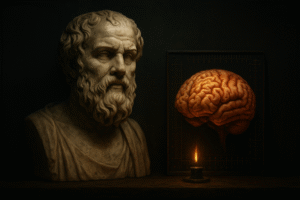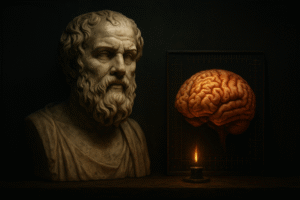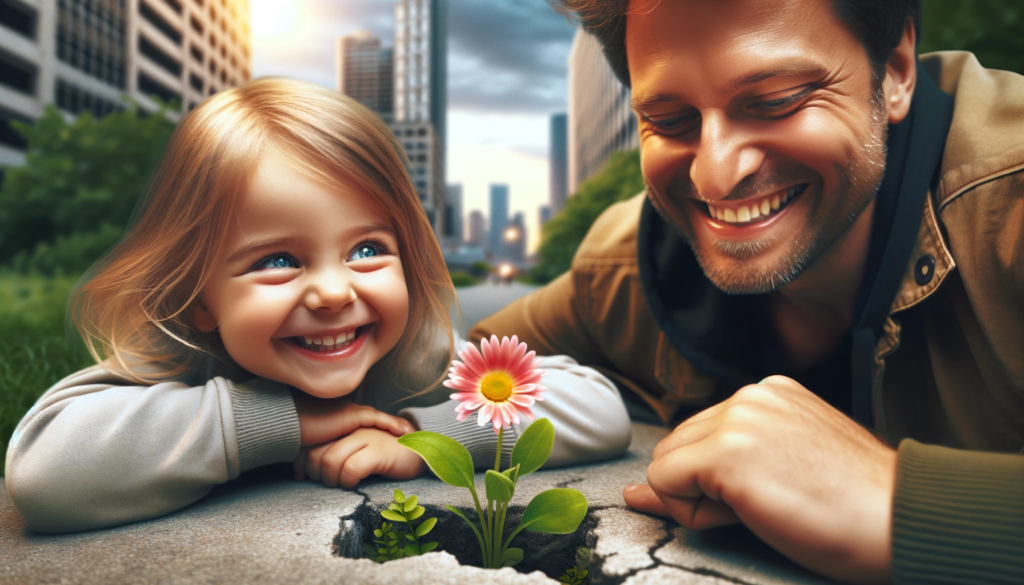
Introduction:
Have you ever wondered what life would be like if you could face each day with more serenity, confidence, and joy? The key to this transformation may be closer than you think. This article is an invitation to explore how cultivating gratitude and seeking emotional balance can revolutionize the way you live. Here, we will unveil simple yet powerful practices that can transform your routine, improve your relationships, and bring lasting peace to your life. We’ll dive into how gratitude can change your perspective, how nurturing emotional well-being is essential for your life, and how emotional stability is the secret to gracefully facing life’s ups and downs. This is the time to explore and integrate practices that nourish a fuller, more harmonious life.
The Transformative Power of Gratitude:
Gratitude is more than just a simple “thank you”; it’s a transformative force that reshapes our mental and emotional health. Studies show that the habit of being grateful brings immeasurable benefits, from improved sleep to reduced stress and anxiety. By adopting a daily attitude of gratitude, we begin to notice the positives in our lives, which strengthens our relationships and provides a more optimistic outlook. The continuous practice of gratitude helps us recognize the good things, even in the toughest times, and cultivate a sense of genuine contentment.
For example, maintaining a gratitude journal can be incredibly transformative. Writing down three things you are grateful for every morning can change the way you see the world, making you more positive and resilient in the face of challenges.
The Origin and Deep Meaning of Gratitude:
As we deepen our understanding of the transformative power of gratitude, it’s equally important to explore its roots and intrinsic meaning. The word “gratitude” originates from the Latin “gratia,” which means “grace” or “thanksgiving.” This etymology reflects the recognition and appreciation of the goodness received, rooting gratitude not just as a feeling but as a profound stance towards life. Understanding this origin helps us perceive gratitude as a fundamental human response to receiving something valuable, nourishing our soul and strengthening our interpersonal connections. Thus, by cultivating gratitude, we are not just expressing thanks; we are recognizing and valuing the interconnection and beauty of life and human relationships.
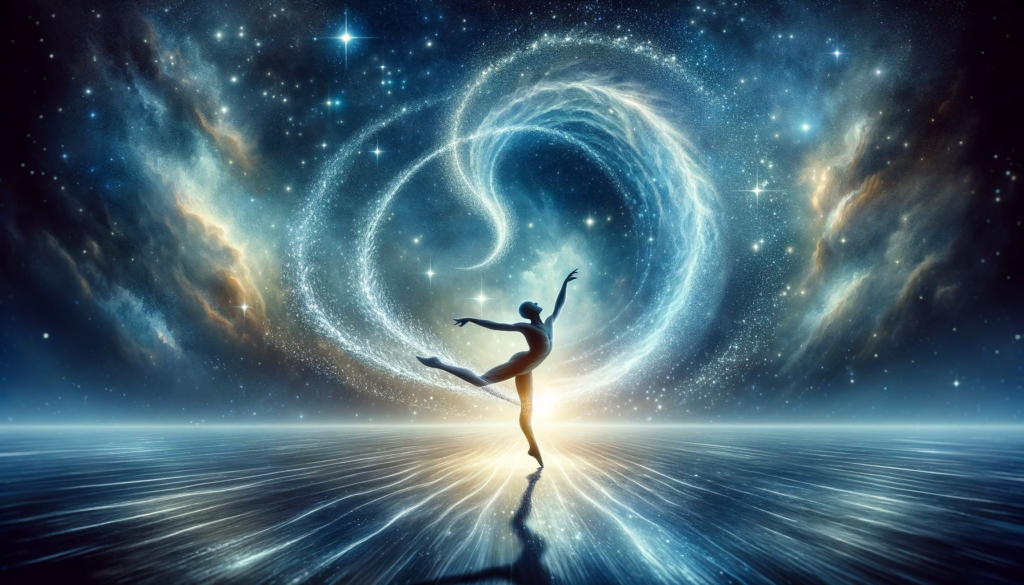
Harmony with the Universe and Spiritual Connection:
Being in harmony with the universe means finding a balance between our inner self and the outside world. This spiritual connection is not just about religion or belief; it’s about feeling part of something greater. When we achieve this harmony, we experience an increase in our overall well-being. We feel more centered, peaceful, and aware. This leads to a deeper appreciation of life and greater awareness of the wonders around us.
Practices such as meditating regularly or spending time in nature can strengthen this connection, providing moments of tranquility and a deeper sense of belonging to the universe.
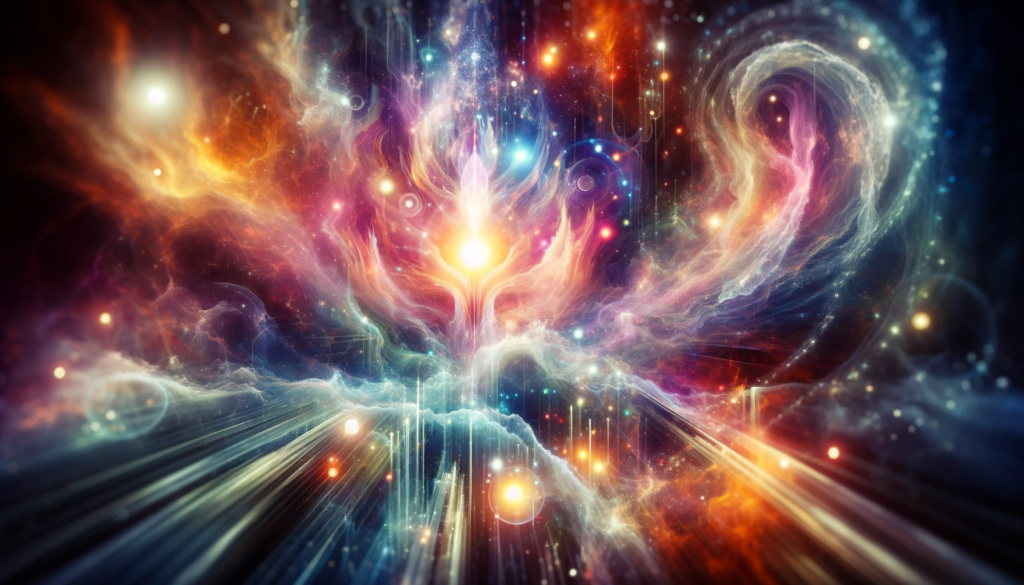
Learning to ‘Dance’ with the Universe:
Life, like a dance, requires flexibility and adaptation. When we learn to “dance” with the universe, we accept that we can’t control everything. Instead of resisting change, we learn to flow with it. This approach helps us live with less stress and more joy, as we learn to trust in the process of life and find beauty even in uncertainties.
Spiritual Awakening and the Expanded View of Reality:
Spiritual awakening is a journey toward a deeper understanding of oneself and the world. It’s a process of seeing beyond the illusions and limitations that restrain us, opening our eyes to the true essence of life. This involves learning to love oneself and one’s unique story, recognizing the lessons and gifts in each experience. Self-knowledge and acceptance are key on this journey, as they allow us to embrace our authenticity and live more in line with our values and purposes.
One might experience a spiritual awakening during a silent retreat, for example, where they reconnect with their true self and begin to see life from a new perspective.

The Analogy Between Riding a Bicycle and Emotional Balance:
Just as riding a bicycle requires balance and constant adjustment, so does our emotional balance. It’s a dynamic process of tuning and retuning, where we learn to maintain stability amid life’s varied situations. Learning from “falls” and continuing to move forward is essential. This balance helps us handle emotions healthily, maintaining calm and clarity even in challenging times.
Learning to ride a bicycle, like learning to manage our emotions, involves falls and recoveries, teaching us to maintain balance through practice and patience.
Living in the Energy of Gratitude and Love
Living in the energy of gratitude and love has a profound impact on our well-being and quality of life. By adopting a stance of gratitude and self-love, we open space for more happiness, contentment, and a sense of abundance. Recognizing daily blessings and loving oneself, with all our imperfections, creates a solid foundation for a rich and full life.
Acts of kindness, such as volunteering, can expand our capacity for gratitude and love, enriching our life experience and strengthening our sense of connection with others.
Conclusion: Integrating Gratitude and Balance into Everyday Life
Integrating gratitude into our daily lives is a powerful way to profoundly and lastingly transform our lives. Committing to being grateful opens doors to a fundamental change in how we experience every aspect of our lives. By adopting practices like keeping a gratitude journal, engaging in self-reflection, or involving ourselves in activities that do us good and feed the soul, we are challenging the chaos of everyday life and taking brave steps toward deeper authenticity and balance.
When we live in harmony with ourselves, we begin to radiate that harmony to the world around us, creating a positive cycle of collective growth. Therefore, I invite you to live with fullness and gratitude, embarking on a journey of self-discovery and transformation. Living fully means being present in the moment, living with enthusiasm, finding creativity, motivation, and joy in everything we do. Combining this mindset with the daily practice of gratitude helps us transform the ordinary into something extraordinary.
This choice is not a final destination but a continuous process of growth and learning. It involves cultivating an appreciation for life’s experiences, whether challenging or rewarding, and finding beauty and purpose in each of them. Every step on this journey becomes more meaningful, every relationship more enriching, and every moment presents opportunities for personal growth.
By adopting this approach, we not only improve our own lives but also positively impact those around us. Our journey of gratitude and fullness becomes a source of inspiration, motivating others to explore their own paths in search of well-being and self-discovery.
Therefore, I encourage you to embrace gratitude and live with fullness, incorporating these principles into your daily routine. May this journey be filled with discoveries, joys, and a deep connection with who you truly are. Start today and celebrate every moment of life in its most authentic and beautiful form. May our actions lead us to learning, love, and a deep connection with the essence of life, leading us to a truly rich and full existence.

References:
Gratitude:
Emmons, R. A., & McCullough, M. E. (2003). “Counting blessings versus burdens: An experimental investigation of gratitude and subjective well-being in daily life.” Journal of Personality and Social Psychology, 84(2), 377-389.
Watkins, P. C., Woodward, K., Stone, T., & Kolts, R. L. (2003). “Gratitude and happiness: Development of a measure of gratitude, and relationships with subjective well-being.” Social Behavior and Personality, 31(5), 431-451.
Harmony with the Universe and Spiritual Connection:
Tolle, Eckhart. “The Power of Now: A Guide to Spiritual Enlightenment.” New World Library, 1999.
Chopra, Deepak. “The Seven Spiritual Laws of Success: A Practical Guide to the Fulfillment of Your Dreams.” Amber-Allen Publishing, 1994.
Emotional Balance:
Goleman, Daniel. “Emotional Intelligence: Why It Can Matter More Than IQ.” Bantam Books, 1995.
Siegel, Daniel J. “Mindsight: The New Science of Personal Transformation.” Bantam Books, 2010.
Spiritual Awakening:
Tolle, Eckhart. “A New Earth: Awakening to Your Life’s Purpose.” Penguin Books, 2005.
Wilber, Ken. “A Brief History of Everything.” Shambhala, 1996.
Self-Love:
Brown, Brené. “The Gifts of Imperfection: Let Go of Who You Think You’re Supposed to Be and Embrace Who You Are.” Hazelden, 2010.
Kamal Ravikant. “Love Yourself Like Your Life Depends On It.” HarperOne, 2020.
The Analogy Between Riding a Bicycle and Emotional Balance:
Csikszentmihalyi, Mihaly. “Flow: The Psychology of Optimal Experience.” Harper & Row, 1990. (Although not directly about bicycles, this book discusses the concept of “flow,” which is relevant for understanding emotional balance.)



